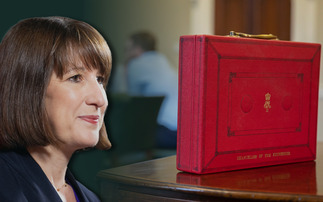Kim Jarvis explores IHT in light of a life-limiting illness and says while planning in such a scenario may be challenging it can be very worthwhile
During their lifetime clients may have invested in many different tax wrappers and needing to ensure they have enough resources in old age may have meant assets, which could have been passed down the generations, have not been.
But there comes a point when sadly clients start to think about taxes on death and controlling who gets their wealth; this is especially true when clients are diagnosed with a terminal illness and become aware of the time they have left to get their affairs in order.
When someone dies the value of all their assets are added together and after deducting any debts and liabilities any excess over their available nil rate band is subject to inheritance tax. Where there is no will, on death assets are distributed in accordance with the rules of intestacy. This could mean that assets don’t pass to the intended beneficiaries; therefore, it is essential that clients ensure that they have a valid will that reflects their wishes.
Next, consider the £3,000 annual exemption and the £250 small gift exemption. If last year’s annual exemption has not been used, then potentially your client can gift £6,000 and while this is not a significant sum it would potentially save £2,400 in inheritance tax (40% x £6,000). Also, gifts of up to £250 can be made to any number of beneficiaries, just remember that it can’t form part of a larger gift and it can’t be combined with the annual exemption.
Where your client has young children then under S11 Inheritance Tax Act 1984 they will be able to make substantial gifts for their children’s maintenance, education or training and it will be immediately outside of their estate.
Worked example
Michael is terminally ill and has two young sons, Stephen 9 and John 7. Even though Stephen and John attend state schools, with both being young and potentially attending university it is anticipated that the cost of the boys’ maintenance, education and training could be in the range of £20,000 a year for each. So, depending on the choice of university and course, potentially John would require maintenance for 17 years, meaning that Michael could gift £340,000 and it would be outside his estate immediately. Michael could transfer the £340,000 into a trust for Stephen and John and provided the gift is exempt under S11 there would be no inheritance tax implications. There may be IHT charges to pay within the trust if Michael uses a discretionary trust but the tax payable by the trust being 6% is substantially less than the 40% potentially payable by Michael’s estate.
However, when using the section 11 relief, planning is still required. The trust should not continue beyond Stephen and John’s full-time education and the amount of money placed in the trust needs to be calculated carefully. Michael’s executors must be able to demonstrate to HMRC that the trust has been put in place for his sons’ maintenance, education and training needs, and that the gift is not excessive. If HMRC think that the trust fund is excessive for the boys’ needs, then the proportion of the gift classed as “excessive” will not benefit from the section 11 relief.
Where your client has an estate of more than £2m, making lifetime gifts could mean that their estate, on death, benefits from the residence nil rate band. The residence nil rate band was introduced in April 2017 and while there are conditions attached, which means that it may not be available to all, making lifetime gifts shortly before death to bring the estate below £2m could achieve substantial tax savings.
Just remember that the gifts themselves will probably have a seven-year clock, unless exempt, so will remain chargeable to inheritance tax.
As the £2m is based on the value of the assets owned at the time of death if, for example, your client has an investment bond which has provided them with an income, during lifetime, by gifting this shortly before their death could ensure that their estate potentially benefits from the residence nil rate band.
With the residence nil rate band currently being £175,000, for 2020/21, a saving of £70,000 inheritance tax could be achieved.
Finally, clients could consider investing in assets that qualify for business relief and provided they have owned the assets for two years before their death there is no inheritance tax. However, normally these assets are riskier and just remember that as the asset is still owned on death it is included in the calculation for the residence nil rate band £2m threshold.
Another issue when advising clients at the later stages of life is whether the client has mental capacity. Where the client has lost mental capacity and you are dealing with an attorney there is a misconception that attorneys can step into the donor’s shoes and gift; however, attorneys can only make gifts within strict limits.
An attorney can make gifts to cover the annual and small gifts exemptions when the donor:
- has a life expectancy of less than five years,
- their estate is worth more than the £325,000 nil rate band,
- the gifts are affordable, considering the donor’s care costs,
- the gift will not adversely affect their standard of care and quality of life and
- there is no evidence that the donor would be opposed to the gifts being made.
Where an attorney wants to make a gift, which is beyond their powers they need the sanction of the Court of Protection.
So, if you are unsure about your client’s mental capacity it might be best to arrange a mental capacity assessment by a GP or psychiatrist to find out whether they can make their own decisions. Such an assessment may be especially important when deciding whether to give gifts of value like the S11 relief mentioned previously.
While successful IHT planning is difficult to achieve for clients with short life expectancies, coupled with the fact that inheritance tax savings may not be the first thing they are thinking about there are still planning opportunities that can be offered. However, these do not outweigh the case for taking advice well before ill health occurs.
Kim Jarvis is technical manager at Canada Life













